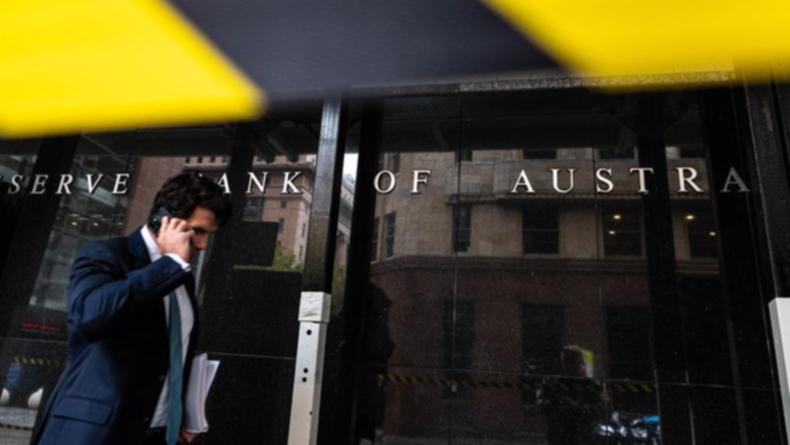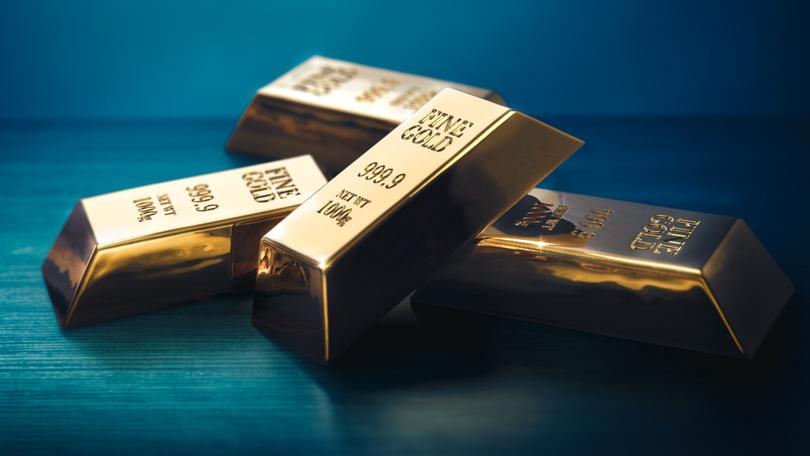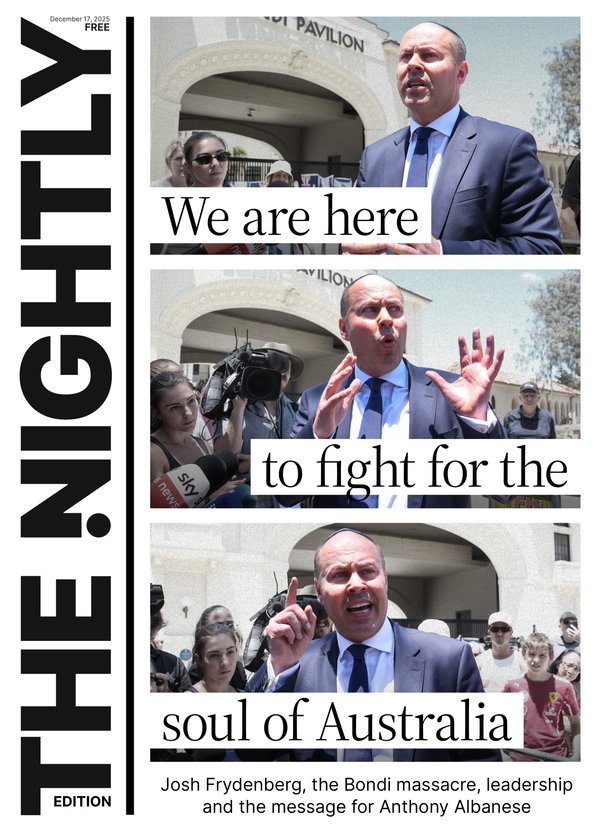RBA interest rates recap: Reserve holds at April meeting as it awaits election, tariffs fallout

The Reserve Bank’s first meeting after providing long-awaited interest rate relief to millions of homeowners just had to fall on April Fools Day, didn’t it?
Under the cover of lighthearted frivolity, we could easily spin you some wildly outrageous yarn about the bank repossessing RBA governor Michele Bullock’s home or the entire RBA board quitting en masse to start their own Dire Straits cover band (Money for Nothing, anyone?)
But, as we’ve learnt the hard way over the past few years, joking about the perilous state of people’s finances and the economy in general is about as cringeworthy as a Meghan Markle cooking show.
Also, in these crazy times when it seems that anything - no matter how absurd - is now possible, it’s getting harder to separate fiction from the holy-crap-did that-really-just-happen facts.
Yes, as Dylan told us: Times, they are a changin’.
But one thing that certainty wasn’t shifting today was the official cash rate, which dropped to 4.1 per cent at the last RBA meeting in mid-February.
Why? Well, there’s a Federal election around the corner and the central bank board will be very happy to keep its powder dry and well away from any suggestion of playing politics, particularly when the campaigns are so focused on the cost of living burden.
But, more importantly, the case for more relief is still pretty flimsy.
Most market punters agree there’s a few more cuts to come this year, but we’ll likely have to wait until at least May for the next one.
Inflation is still moderating, and is within the RBA’s preferred 2 to 3 per cent target band, but the board is likely to want to see a broader set of numbers before cutting again.
Then there’s the Trump card. The US President is preparing to unveiling sweeping global tariffs tomorrow. While Australia may yet avoid a direct hit, the ramifications for the world’s biggest economies could be substantial and send plenty of aftershocks our way.
The RBA wants to hold fire for now until it has a better idea of what lies ahead.
For those who did bet on a cut may have done well to recall the adage “a fool and his money are soon parted”.
Sorry.
Key events
01 Apr 2025 - 12:49 PM
No mention of the election
01 Apr 2025 - 12:14 PM
More clarity to come
01 Apr 2025 - 12:03 PM
And each-way bet?
01 Apr 2025 - 11:48 AM
Too many unknowns to make a change
01 Apr 2025 - 11:45 AM
On the jobs market ...
01 Apr 2025 - 11:36 AM
In the RBA’s words ...
01 Apr 2025 - 11:32 AM
No-go on a second round of cuts
01 Apr 2025 - 11:17 AM
We’re just 15 minutes away ...
01 Apr 2025 - 11:07 AM
PM asked about looming RBA decision
01 Apr 2025 - 10:50 AM
The current economy, by the numbers ...
01 Apr 2025 - 10:39 AM
How to make sure your super survives Trump’s tariff war
01 Apr 2025 - 10:35 AM
Countdown is on ...
01 Apr 2025 - 10:23 AM
How a rate cut boosts the economy
01 Apr 2025 - 09:52 AM
House prices back in record territory after last rate cut
01 Apr 2025 - 09:29 AM
Golden run continues for safe haven metal
01 Apr 2025 - 09:17 AM
Treasurer backs in market’s bet on no cut
01 Apr 2025 - 09:01 AM
How much interest do you pay a day?
01 Apr 2025 - 08:48 AM
Retail sales hold steady
01 Apr 2025 - 08:40 AM
What is ‘Liberation Day’?
The current economy, by the numbers ...
Some sobering stats from Equifax paint a picture of the current state of the economy, consumer spending and credit demand ...
- All mortgage demand: Up 4 per cent (when adjusted for trading days). Month-over-month, demand rose 24 per cent.
- Personal loan demand: Rose 3 per cent year-over-year, likely due to increased post-holiday spending and resulting debt. Month of February decreased by -8.8 per cent compared to last month.
- Credit card demand: Decreased 0.4 per cent (when adjusted for trading days). Month-over-month, demand fell by 10.6 per cent, and year-to-date, it’s down 3.1 per cent.
- Auto loans year-on-year for February: Decreased by 5.2 per cent compared to 2024 and -1.1 per cent month-over-month.
- Buy-now, pay-later demand: Strong growth of 18 per cent in February compared to February 2024. Demand for BNPL decreased by 7.3 per cent month-over-month.
How to make sure your super survives Trump’s tariff war
Billions wiped off super balances, share market turmoil sees retirement plans quashed.
It’s headline that you’ve probably seen recently and may have caused you a sleepless night or two.
But it doesn’t have to.
If we understand what’s been going on and what’s likely to happen next, we’ll see that history can provide some much-needed comfort.
Read more here.
Countdown is on ...
We’re just an hour away from the RBA’s April rates call.
Markets are pricing in the slimmest of chances they’ll be a cut ... but you never can tell.
Governor Michele Bullock was steadfast at her post-February rates decision briefing - one cut does not guarantee a second will immediately follow.
There’s been good progress on inflation and jobs numbers are holding steady. But most are betting there’s just not enough data to convince the board that another reduction in the cash rate is warranted right now.
May is shaping up as a better bet - once the dust settles from the Federal election and global markets have had a chance to digest any ramifications from Donald Trump’s latest lot of tariffs.
Stay tuned, we’ll bring you all the news you need to know at 11.30am (AWST) or 2.30pm (AEDT).
How a rate cut boosts the economy
There will be plenty of focus today on your wallets and your mortgage.
Behind the scenes, a rate cut would have a wider impact to boost the economy. Here’s how:
- Your interest bill: When rates are cut, Aussie borrowers have more cash to spend, boosting demand. When you celebrate a rate cut with a glass of bubbly, that flows on to businesses. Businesses with debts also see their interest payments fall, improving their finances.
- You feel wealthier: Activity in the property market heats up, just as Australia saw coming out of the pandemic. Share markets also tend to rise when rates are expected to drop. Feeling wealthier, punters will dine out and splash more cash.
- Exchange rate: Generally, lower interest rates will push the Aussie Dollar down over time. Good news for farmers or miners selling on the world stage. It will also push the price up for shoes, clothes, tech, fuel and other imports. Local companies competing with overseas manufacturing get a slight edge when the exchange rate falls.
- Business: Your boss is more likely to borrow cash and approve your latest crazy project idea when interest rates are on the way downward. Time to upgrade that pizza oven in your restaurant!
House prices back in record territory after last rate cut
Homeowners will have an extra pep in their step as figures show Australia’s property market returning to record highs.
Values increased 0.4 per cent over March after the Reserve Bank cut interest rates for the first time in four years.
The lift in CoreLogic’s national Home Value Index was broadly based with rises in every capital city except Hobart, along with all the rest-of-state regions.
“Improved sentiment following the February rate cut is likely the biggest driver of the turnaround in values,” CoreLogic research director Tim Lawless said on Tuesday.
Read more here ...
Golden run continues for safe haven metal
Gold has started the week with a fresh record high, ahead of President Donald Trump’s expected next tariff rollout that’s heightened concerns over an economy-hurting global trade war.
Bullion gained as much as 1.4 per cent to $US3127.92 an ounce. Prices have posted four straight weekly gains, supported by growing haven demand amid a risk-off mood for broader markets.
Traders are on edge as Mr Trump plans to announce sweeping levies on all of America’s trading partners.

Bullion is often the go-to haven in times of economic and political uncertainty. Investor holdings of physically-backed gold exchange-trade funds have climbed 6 per cent so far in 2025 after four years of net outflows, according to data compiled by Bloomberg.
Gold is up almost 19 per cent this year in a run that’s seen it clinch at least 15 all-time highs.
ASX rebounds from bloody Monday
Australia’s leading market index has regained some ground after yesterday’s blodbath.
The S&P-ASX200 had jumped more than 0.8 per cent in early trade but had dropped back to be up 0.5 per cent to 7877.9 points by 9.20am.
All 11 sectors were back in the green, led by utilities, real estate, consumer staples and mining stocks.
Treasurer backs in market’s bet on no cut
Treasurer Jim Chalmers says economic conditions are improving, driven by falling inflation.
“Almost nobody in the market expects there to be an interest rate cut, so we’re up front about that,” he said.
“I don’t know anyone who’s expecting an interest rate cut, but interest rates have already started to come down on our watch.”
The interest rate decision comes after figures showed inflation fell to 2.4 per cent in February, while non-volatile inflation dropped to 2.7 per cent.
The inflation numbers were within the Reserve Bank’s target band of between two and three per cent but more weight is given to quarterly figures, which are not as prone to fluctuations.
How much interest do you pay a day?
There’s a very easy way to work it out ... and, depending on the size of your mortgage, you may need a good lie down afterwards.
Check out the quick calculation in the story below.
It’s also why a few tweaks to how you pay off your home can make a massive diffferece to the interest you’ll pay overall ... but also how long you’ll pay it for.
Read more here ...
Retail sales hold steady
Thrown into the RBA’s mix for debate today will be the latest set of numbers for retail sales.
The data, released just a few minutes ago by the Australian Bureau of Statistics, shows retail turnover across the country rose 0.2 per cent in February, seasonally adjusted.
This followed a rise of 0.3 per cent in January and a fall of 0.2 per cent in December.
Robert Ewing, ABS head of business statistics, said there were mixed results across the industries.
“Like the January month, it was food-related spending which drove the rise in retail turnover this month,” Mr Ewing said.
Both food retailing (+0.6 per cent) and cafes, restaurants and takeaway food services (+0.2 per cent) rose for a second-straight month.
Household goods retailing plunged more than 4 per cent.
“Following promotion-based growth across the December quarter, spending on household goods continued to moderate with lower discretionary spending to begin the year,” Mr Ewing said.
This was partly offset by spending growth in department stores (+1.5 per cent) and clothing, footwear and personal accessory retailing (+0.4 per cent).
Retail turnover was up in most States and Territories, led by WA (+0.8 per cent), which had its seventh-straight monthly rise, and New South Wales (+0.5 per cent).
